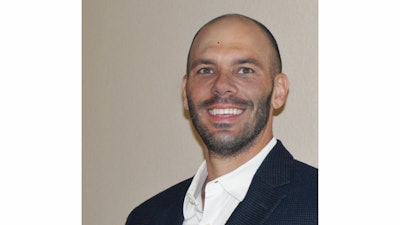
I recently had the opportunity to participate in a panel webinar (the replay is available to watch if you missed it) hosted by Supply and Demand Chain Executive on the future of global procurement. Hearing from both S&DC Executive Editor-in-Chief Barry Hochfelder and the other panelists was inspiring, but it was really interesting to hear from the attendees in the answers to the poll questions asked during the webinar.
Dissatisfaction with Procurement Operations
Only 20% of attendees on webinar were satisfied with the efficiency of their current procurement operation, with over 50% not satisfied, and 25% not even sure. I have to say, this one did not surprise me at all.
As I mentioned during the panel, the number one frustration I hear from my clients is the time consumed and the difficulty tracking down data, then having insufficient data because people didn’t input it correctly or completely.
Every time companies rely on manual input of data they are gambling with one of their company’s most precious resources: information. Manual input allows for errors in the amount of supplies ordered, mistakes in the number of packages received, overpayment/underpayment/late payment of invoices – all of which can cause manufacturing bottlenecks, inventory shortages/overages, and cash flow issues.
It’s amazing to me that with all the global risks that exist outside a company’s control (political unrest, weather, natural disasters), they are still willing to accept risk that is controllable – that which resides within their own supply chain operations due to manual processes.
Managing and Communicating with Suppliers
Yet, our 2nd poll question shows that despite procurement and automation being a supply chain priority, the vast majority of our webinar attendees still rely on manual processes – email or even mail – to communicate with suppliers. Only a small percentage, 5%, take advantage of the benefits of a supplier portal.
Not only does relying on manual processes such as email or mail inject risk and error into your supply chain, it sucks up time procurement professionals could be spending on more strategic activities. Think about the time and money spent on repetitive processes such as purchase order creation, tracking down purchase order acknowledgements, your advanced shipping notices, matching invoices to receipts and POs.
Manual processes also keep your information from being shared and easily accessible. Order histories are buried in someone’s email inbox or potentially, paper files. There’s no way to look at that information in aggregate to discover potential issues or overall trends. Utilizing a supply chain collaboration portal makes all that information easily accessible from virtually anywhere. A portal that connects to your ERP and other internal systems as well as external trading partner systems allows for the “holy grail” of supply chain management: a single version of the truth. No more flipping between systems only to find that the data you are searching for doesn’t match system to system. And with all that information accessible in one location it can be reviewed, evaluated and utilized to make the supply chain perform better.
The good news is that moving to an automation and collaboration solution that makes this information a useful asset does not require a large financial investment anymore, not with current cloud-based SaaS solutions.
What’s holding you back?
One of the questions that didn’t get asked during the webinar was “Why?” If automation and collaboration are priorities and businesses are unhappy with the current set up, why haven’t they moved forward with a better solution? This is something we’re very curious about and in fact, are running a survey about this very topic. We would love to hear from you. TAKE the survey here.
Tried and True isn’t Always
Many companies are comfortable with “the way it’s always been done”, but it was great to see that so many attendees at this webinar were dissatisfied with their current situation. So what’s next? Well, as I stated in the webinar, an ROI analysis is always a great first step. I didn’t go into this in too much detail, but if companies have some data around existing operations, such as # of suppliers and # of POs generated per month, we can run that through our ROI modeler to discovered how quickly the company can begin to see a return on their investment in terms of cost savings. It’s often much sooner than many supply chain executives expect.
I should mention that this is something we offer as a free service – contact me if you’re interested in learning more. With that information, some of the stress and anxiety around moving to a new way of doing things is alleviated. When the risk of change is much less than the risk of the status quo, the next move becomes obvious.


















